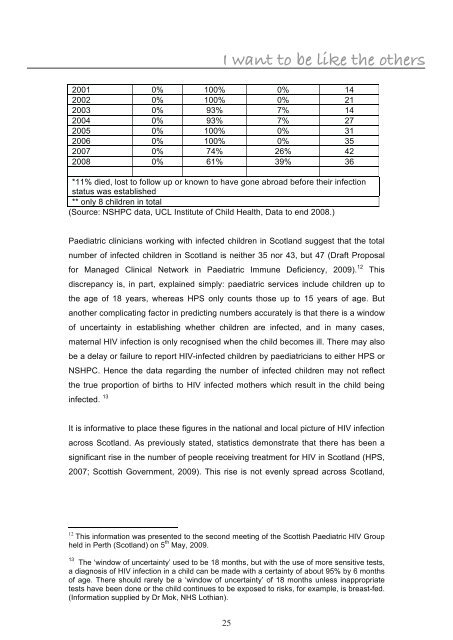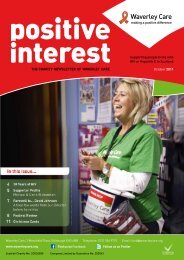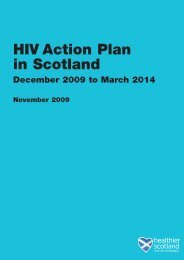I want to be like the others - Waverley Care
I want to be like the others - Waverley Care
I want to be like the others - Waverley Care
- No tags were found...
You also want an ePaper? Increase the reach of your titles
YUMPU automatically turns print PDFs into web optimized ePapers that Google loves.
I <strong>want</strong> <strong>to</strong> <strong>be</strong> <strong>like</strong> <strong>the</strong> o<strong>the</strong>rs2001 0% 100% 0% 142002 0% 100% 0% 212003 0% 93% 7% 142004 0% 93% 7% 272005 0% 100% 0% 312006 0% 100% 0% 352007 0% 74% 26% 422008 0% 61% 39% 36*11% died, lost <strong>to</strong> follow up or known <strong>to</strong> have gone abroad <strong>be</strong>fore <strong>the</strong>ir infectionstatus was established** only 8 children in <strong>to</strong>tal(Source: NSHPC data, UCL Institute of Child Health, Data <strong>to</strong> end 2008.)Paediatric clinicians working with infected children in Scotland suggest that <strong>the</strong> <strong>to</strong>talnum<strong>be</strong>r of infected children in Scotland is nei<strong>the</strong>r 35 nor 43, but 47 (Draft Proposalfor Managed Clinical Network in Paediatric Immune Deficiency, 2009). 12 Thisdiscrepancy is, in part, explained simply: paediatric services include children up <strong>to</strong><strong>the</strong> age of 18 years, whereas HPS only counts those up <strong>to</strong> 15 years of age. Butano<strong>the</strong>r complicating fac<strong>to</strong>r in predicting num<strong>be</strong>rs accurately is that <strong>the</strong>re is a windowof uncertainty in establishing whe<strong>the</strong>r children are infected, and in many cases,maternal HIV infection is only recognised when <strong>the</strong> child <strong>be</strong>comes ill. There may also<strong>be</strong> a delay or failure <strong>to</strong> report HIV-infected children by paediatricians <strong>to</strong> ei<strong>the</strong>r HPS orNSHPC. Hence <strong>the</strong> data regarding <strong>the</strong> num<strong>be</strong>r of infected children may not reflect<strong>the</strong> true proportion of births <strong>to</strong> HIV infected mo<strong>the</strong>rs which result in <strong>the</strong> child <strong>be</strong>inginfected. 13It is informative <strong>to</strong> place <strong>the</strong>se figures in <strong>the</strong> national and local picture of HIV infectionacross Scotland. As previously stated, statistics demonstrate that <strong>the</strong>re has <strong>be</strong>en asignificant rise in <strong>the</strong> num<strong>be</strong>r of people receiving treatment for HIV in Scotland (HPS,2007; Scottish Government, 2009). This rise is not evenly spread across Scotland,12 This information was presented <strong>to</strong> <strong>the</strong> second meeting of <strong>the</strong> Scottish Paediatric HIV Groupheld in Perth (Scotland) on 5 th May, 2009.13 The ‘window of uncertainty’ used <strong>to</strong> <strong>be</strong> 18 months, but with <strong>the</strong> use of more sensitive tests,a diagnosis of HIV infection in a child can <strong>be</strong> made with a certainty of about 95% by 6 monthsof age. There should rarely <strong>be</strong> a ‘window of uncertainty’ of 18 months unless inappropriatetests have <strong>be</strong>en done or <strong>the</strong> child continues <strong>to</strong> <strong>be</strong> exposed <strong>to</strong> risks, for example, is breast-fed.(Information supplied by Dr Mok, NHS Lothian).25











